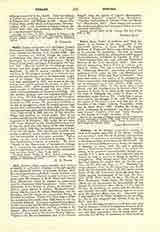

Curley, JAMES, astronomer, b. at Athleague, County Roscommon, Ireland, October 26, 1796; d. at Georgetown, District of Columbia, U.S., July 24, 1889. His early education was limited, though his talent for mathematics was discovered, and to some extent developed, by a teacher in his native town. He left Ireland in his youth, arriving in Philadelphia, October 10, 1817. Here he worked for two years as a book-keeper and then taught mathematics at Frederick, Maryland. In 1826 he became a student at the old seminary in Washington, intending to prepare himself for the priesthood, and at the same time taught one of its classes. The seminary, however, which had been established in 1820, was closed in the following year and he entered the Society of Jesus, September 29, 1827. After completing his novitiate he again taught in Frederick and was sent (1831) to teach natural philosophy at Georgetown College. He also studied theology and was ordained priest on June 1, 1833. His first Mass was said at the Visitation Convent, Georgetown, where he afterwards acted as chaplain for fifty years. He spent the remainder of his life at Georgetown, where he taught natural philosophy and mathematics for forty-eight years. He planned and superintended the building of the Georgetown Observatory in 1844 and was its first director, filling this position for many years. One of his earliest achievements was the determination of the longitude of Washington. His results did not agree with those obtained at the Naval Observatory, and it was not until after the laying of the first transatlantic cable in 1858 that his determination was found to be near the truth. The coincidence, however, was partly accidental, as the method which he employed was not susceptible of very great precision. Father Curley was also much interested in botany. He is best remembered, however, as a teacher. He wrote “Annals of the Observatory of Georgetown College, D.C., containing the description of the Observatory and the description and use of the transit instrument and meridian circle” (New York, 1852).
H.M. BROOK

